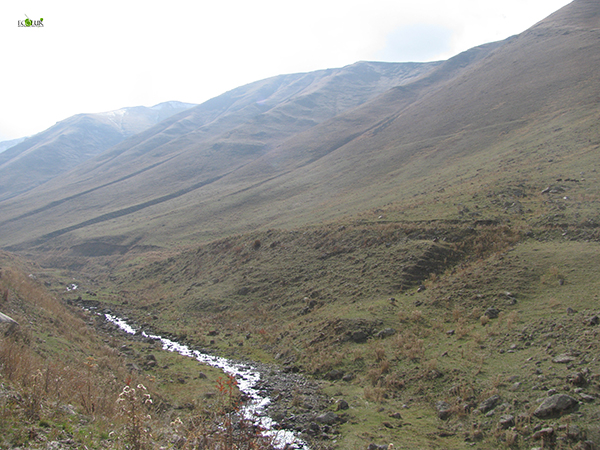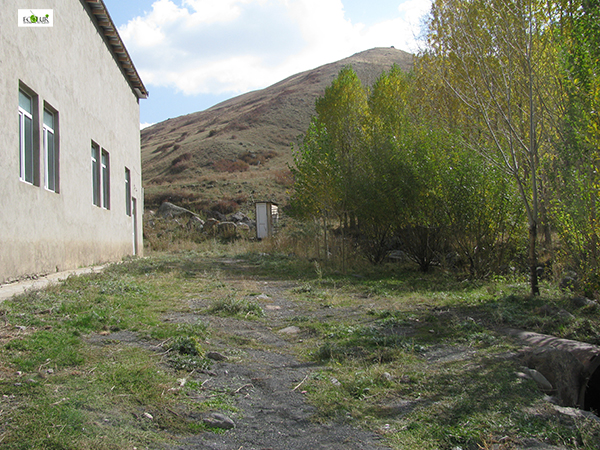

EcoLur
In the framework of the project entitled “Support to SHPP-relating Reforms Through the Dialogue of Public and RA Nature Protection Ministry for Sustainable Use of River Ecosystems” the expert group visited “Martuni” SHPP. “Martuni” SHPP is located in Gegharkounik Region, in the administrative area of Martuni Town. The SHPP is constructed in Lake Sevan basin, on the Martuni River, which flows into Lake Sevan (length – 27 km). It’s operated by “MKSHG Energiya” LLC.
As a result of the monitoring, the expert group found out:
- The SHPP has been operating since 2011.
- According to the certificate issued by the Public Services Regulatory Committee on 1 October 2015 and the project, the estimated pressure of the SHPP is 174.4 m. According to the project and PSRC certificate, the estimated yield used by the SHPP is 1.3 m3/s. According to the PSRC certificate and project, the projected capacity – 1800 kW. According to the PSRC, as of October 2015the factual useful delivery of the electricity is 3.399 million kWh. The estimated production of the SHPP is 7.23 million kWh according to the project, duration of license - 02.03.2011-02.03.2026, water usage permit 26.07.2011-26.07.2014. The SHPP has applied to Nature Protection Ministry to extend the term of water usage permit.
- The real coordinates of the SHPP water intake point and water discharge don’t comply with the coordinates laid down in the water usage permit. The height above sea level mentioned in the water usage permit complies with the height in the PSRC certificate.
- The length of the dam is 5 meters, its height is 2.4 meters.
- There is a concret-made semi-maze fish passway in the head section, which is 18.0 meters long, 1.4 meters high and 0.9-1.1 meters wide.
- The fish passway consists of 13 individual section, which separate from each other with partitions – 0.88 m long and 1.1 m high. The width of the holes between the paritions and the walls of the fish passway is 18 cm. In general, the fish passway can promote the migration of the Salmo species, nevertheless, its lower stair is constructed on the pebbles and has around 60 cm height, which is an additional obstacle for the trout migration. There are deep grooves made in the concrete near the entranc of the fish passway, which can block the entrance of the fish passway, if needed.
- The sand trap is equipped with a garbage-collecting cage net, and the distance between its bars is 1.5-2 cm. Such distance between the bars can’t be an obstacle for the small fish 6 cm long or more to appear in the pressure pipeline.
- You can meet the following fish species in the upper reach of the Martuni River, where the SHPP head section is constructed: the brown trout, the Gegharkouni (these fish species are red-listed in Armenia). The Sevan khramulya may also flow up here.
- The SHPP pipeline is made of steel, its length complies with the project data. According to the project, 2900-meter-long section of the pipeline has a diameter of 0.8 m, 1600-meter-long section of the pipeline has a diameter of 0.9 m. The pipeline is laid along the river.
- Percentage correlation of aggregate length of the SHPP derivation pipeline (4500 meters) with the length of Martuni River (27 km) makes up 16.66 %.
- At the moment of observation, the water surface of the upper canal pound of the water intake, as well as the water surface at the end of the sand trap was covered with scum, which shows possible water pollution source up the water intake.
- According to the water usage permit, “Martuni” SHPP can take water in 12 months, annually 17.9 million cum ensuring 0.05 cum/s environmental flow. The same amount of environmental flow was set in the project. The water intake section has a relevant slope, which allows the environmental flows into the fish passway.
- The numerical indicators set in the water usage permit are automatically calculated: the environmental flow of 0.05 m3/s has been subtracted from the monthly indicator of the average flow of the river, as in low-water years the SHPP is allowed to take more water in all months of the particular year, than it’s left in the river after the environmental flow. This means that the company is allowed to use the water of the environmental flow.
- According to “Computation Center” CJSC data, in 2014 “Martuni” SHPP operated for 12 months in 2014 and produced 3099971 kW electricity.
- There are three hydroaggregates of local “Khorda” production installed in the SHPP building, each of them has 800 kW projected capacity. The generators are of Russian production, its turbines are of local “Khorda” production. At the moment of observation, only one aggregate was operating, which ensured 152 kW projected capacity with 430 l/s water amount. According to the SHPP employee, the economic profitability of the SHPP is low and the SHPP doesn’t ensure its projected capacity. Three hydroaggregates operate from the second half of April to June and ensure capacity of 1300 kW capacity instead of projected 1800 kW.
- There is semi-automated system operating in the system.
- The transformer substation is fenced, the installed transformers are not equipped with oil-collecting system.
- There is no water-meter sealed by a relevant environmental body in the water intake.
- There is a ruler installed at the entrance part of the fish passwat to regulate environmental flow.
- Automatic management of recording of water intake and environmental flow is not ensured.
- The station area is improved and greened.
- The measures aimed at reclaiming and recovery of the landscapte are obviously not sufficient in the areas of laying the pipeline. It’s aslo conditioned with the relief of the area (slopes).
- In the river section used for the SHPP irrigation is carried out for the land areas of Geghhovit community.
- The requirements of free water usage ar complied with.
- The discharge of household wastewaters is carried out with the help of a septic well.
- The SHPP has been imposed an administrative fine of 100,000 AMD for the violation of the provisions of Article 32 of RA Water Code in 2014.
- The SHPP is close to “Sevan” National Park, a specially protected area of nature.
Conclusion
In the process of the preservation and reproduction of the fish fauna in Lake Sevan all the SHPP structures and the amount of the environmental flow in the river shall not hinder the natural movement of the fish in any way. The environmental flow of 1.0 m3/s set in the water usage permit is strictly adhered to. If these conditions are unable to be met, all these structures and other SHPPs constructed on the rivers in Lake Sevan basin shall be dismantled. Hydrological data are not reliable, which results in the lack of irrigation for affected communities.
A special regime shall be set for the SHPPs constructed on the rivers flowing into Lake Sevan based on the need of fish reserve preservation and fish reproduction and artificial replenishment of the population.
Proposals
- To ensure automatic management of environmental flow in the head section, installation of water-measuring devices and online control.
- To review hydroeconomic estimates to add the water amount of environmental flow adequately: the set environmental flow of 0.05 m3/s is too small, which can’t ensure natural state of the river ecosystem and biodiversity.
- To reconstruct the water intake section for the fish conservation, reliable flow of the upper reach of the river, as well free-of-obstacle environmental flow, including adding the number of the stairs of the water intake section with one more stair.
- To re-equip the SHPP with new and up-to-date hydroaggregates having high efficiency to have entirely automated management system, to operate with little water amount and to ensure the projected capacity.
- To equip the transformers with oil-collecting system.
- To repair the valves, as water was leaking and it affected on the normal operation of the SHPP.
- To find out the pollution source of the water up the water intake.
- To review the water usage permit and to replace it with an environmental passport, where the main indicator will be the environmental flow from the water intake point to water return point.
 |
 |
 |
 |
 |
 |
 |
 |
 |
 |
 |
 |
 |
 |
 |
 |
The material was developed in the frames of “Supporting reforms in the sector of small hydro power plants through enabling a dialogue between civil society and the Ministry of Nature Protection for sustainable use of river ecosystems” supported by UNDP/GEF Small Grants Programme".
March 31, 2016 at 18:36
